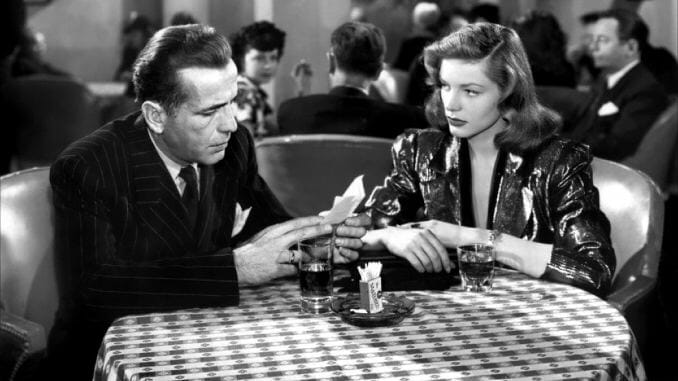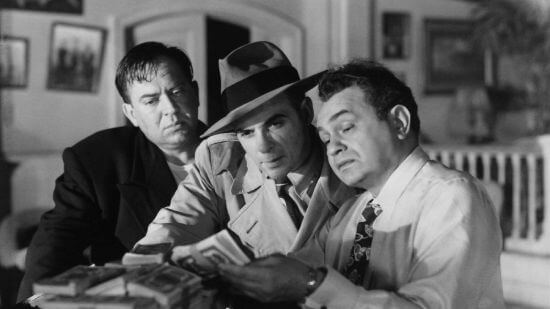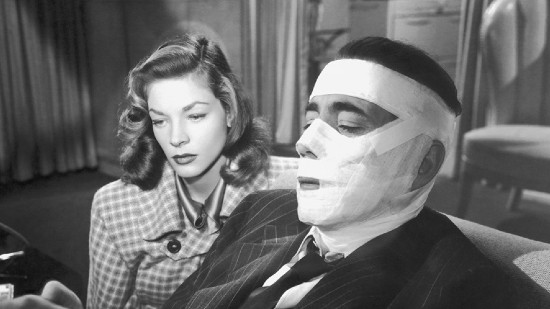Every Bogart and Bacall Movie, Ranked

There may be no two stars that greater encapsulate the enchantment of classic Hollywood than Humphrey Bogart and Lauren Bacall. The pair of actors have been so long celebrated that to wax lyrical about the power they each held in front of the camera is to border on redundancy. Who doesn’t know about the pure magic of two of the greatest screen performers to ever live? And yet the flip side of that coin is that they’re a pair with such indelible depth to their craft and body of work that you could mine endless conversation out of Bogey’s handsomely weathered eyes, or Bacall’s seductive and smoky gaze.
It seems almost too fitting that the two would also go down as Hollywood’s greatest love story, and yet real life garnered a leg up on the movies. Their romance sounds like its own magnificent Hollywood melodrama: The forbidden relationship between two stars that led to on-set drama and industry speculation, caused Bogart to leave his wife, was laced with affairs, and was cut all too short by Bogart’s untimely death in 1957 after 12 years of marriage. During their courtship and the early years of their marriage, they starred in four movies together, each that contributes a different layer of insight to their timeless legacy. They were never in a truly bad film together, but we’ve done our best to rank their run of movies from worst to best. Here’s looking at you, reader. (That’s a different Bogie movie, but you get the idea.)
Here is every Bogart and Bacall movie, ranked:
5. Two Guys From Milwaukee (1946)

“Entry number five?” I hear you ask. “I thought that there were only four Bogart and Bacall movies?” You’re not alone: I did too, until my editor graciously revealed to me this mostly forgotten comedy released the same year as The Big Sleep, which features the power couple in a brief cameo appearance. Two Guys From Milwaukee is notable, however, for how it directly addresses the cultural magnitude of the pair’s status as American icons of the era. Director David Butler’s film is about the Balkan Prince Henry (Dennis Morgan, donning a straight American accent for his character of European royalty) who, during a political visit to America, becomes enamored with the radiance of American prosperity and beauty—which includes his fascination with screen star Lauren Bacall herself, a recurring gag that peppers the fish-out-of-water tale.
Arriving in New York and sick of the stuffy politicking that has encompassed his entire visit to the country thus far, he sneaks away from his professional duties and befriends the unwitting cab driver Buzz Williams (Jack Carson), who shows him the true, open heart of the country. Fitting for its release year, it’s a rather idealized portrait of America that celebrates a romanticized rapport and harmony that comes with being a citizen of a country that prides itself on being a Free Nation. (Prince Henry falls in love with America’s flawless system of democracy! Hooray!) But it’s also just a decently amusing and charming piece of fluffy comedy that will have you engaged more often than you expect, perhaps courtesy of being co-written by I.A.L. Diamond, the screenwriter responsible for some of Billy Wilder’s best films such as The Apartment and Some Like It Hot. For the purposes of this list, Two Guys From Milwaukee has to go last by default as the Bogart and Bacall appearance lasts all of 15 seconds, but it’s a cute button on a movie that sometimes feels like it was made specifically to promote The Big Sleep—a mid-movie comic setpiece involves the characters comically interrupting a packed screening of the film, stumbling in on an iconic scene with conspicuous signage adorning the cinema.
-

-

-

-

-

-

-

-

-

-

-

-

-

-

-

-

-

-

-

-

-

-

-

-

-

-

-

-

-

-

-

-

-

-

-

-

-

-

-

-












































